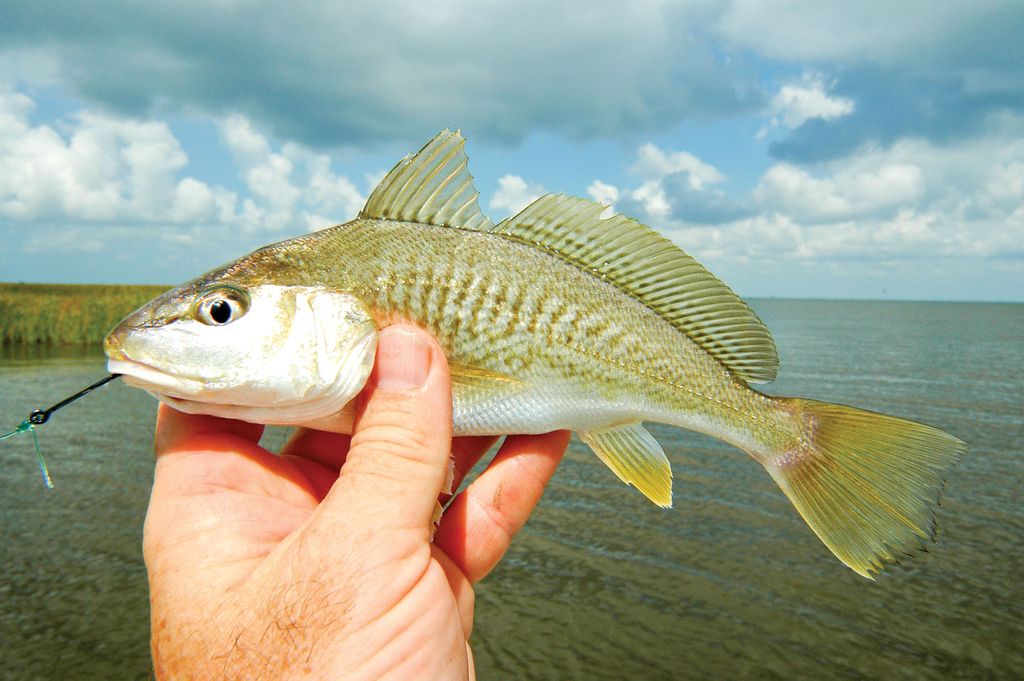Croaker is an excellent fish with a mild and delicious flavor. It has light, flaky flesh that pairs well with a variety of flavors. From its bright, briny flavor to its delicate texture, croaker is a versatile fish that can be cooked in many different ways.
When cooked correctly, croaker has a mild flavor that won’t overpower the other ingredients you may pair it with. It can also be cooked in a variety of ways depending on your preference: baking, frying, grilling, or poaching are all great options for this saltwater fish. When cooked properly, the skin remains crispy and the flesh is tender and juicy.
The delicate flavor of croaker makes it incredibly versatile when it comes to adding seasonings and sauces to your meal. Garlic and lemon are classic additions that enhance the flavor without overpowering it. For those looking for some extra spice, hot peppers or chili powder can also be added to give your dish an extra kick.
When selecting croaker for your meal, you want to look out for ones with firm flesh and no visible signs of discoloration or damage such as bruising or tears in the skin. Freshly caught Atlantic Croakers tend to have the best texture and taste but frozen filets can also make great dishes as long as they were frozen at their peak freshness.
Overall, croaker is an excellent option when looking for a mild yet flavorful fish dish that will pease even picky eaters. Whether you are an experienced cook or just starting out in the kitchen, this fish will easily become one of your go-to meals!
Is Croaker a Delicious Fish to Eat?
Yes, croaker is a great eating fish! It has a mild, sweet flavor and a delicate texture that makes it perfect for baking. When cooked properly, the filets will flake easily and be filled with delicious flavor. To prepare it, simply sprinkle the filets with salt, pepper and lemon juice and bake 10 minutes for every inch of fish. Enjoy this delectable fish as part of your next meal!

Similarities Between Croaker Fish and Other Fish
Croaker fish is similar to other fish in the Sciaenidae family, such as red drum, black drum, and speckled sea trout. It is typically cooked whole due to its small size, with a delicate flakey texture and a mild, briny flavor. It can be prepared in many different ways, including baking, broiling, frying or grilling.
The Unique Qualities of Croaker Fish
Croaker fish are a type of drum family fish, native to the Atlantic Ocean and Gulf of Mexico. They are characterized by their loud croaking noise, made by vibrating strong muscles against its swim bladder. This acts as a resonating chamber, much like a ball, making them the loudest of the drum family. Croaker fish can also be referred to as hardheads; smaller ones being called pin heads.
Croaker fish are an important part of many marine ecosystems, and have long been important for commercial fisheries in the United States. They feed on small crustaceans and mollusks, and in turn provide food for larger predators such as sharks and other fishes. In addition to being a source of food, Atlantic croaker also serve an important role in controlling bottom-dwelling invertebrate populations.
Due to their importance to marine ecosystems and fisheries, croaker fish are managed by the Atlantic States Marine Fisheries Commission (ASMFC). The ASMFC has developed harvest regulations to ensure that thse species can remain sustainable over time.
Types of Croaker Fish
Croakers are a type of fish belonging to the drum family (Sciaenidae). They are usually medium-sized, ray-finned fish, with a thin, silver-gray body and slender profile. The most widely distributed species is the Atlantic croaker (Micropogonias undulatus), which is found along the Atlantic coast of North America from Cape Cod to northern Mexico. Other species include the Gulf kingfish (Menticirrhus littoralis), which is found in the Gulf of Mexico and along the western Atlantic coast; and the Pacific croaker (Odontoscion dentex), which is found along the coasts of California and Baja California. All members of this family have distinctive thick lips and are able to make a loud drumming or croaking sound by vibrating their swim bladder usng special muscles.
Comparing the Taste of Croaker and Tilapia
When deciding between Croaker and Tilapia, it is important to considr the nutritional content of each. Croaker contains higher levels of Vitamin B12, Vitamin B6, Vitamin E, Phosphorus, and Vitamin B5 than Tilapia. Additionally, Croaker has a daily need coverage for Vitamin B12 that is 38% higher than Tilapia. It also has three times more Vitamin E than Tilapia. On the other hand, Tilapia is richer in Vitamin D and Selenium compared to Croaker.
Ultimately, the better option depends on your individual needs and preferences. If you are looking for fish with a good amount of Vitamin B12, then Croaker is the better option. However, if you are looking for a fish with more Selenium or Vitamin D content then Tilapia might be a better choice for you.

What is the Alternative Name for Croaker Fish?
Croaker fish are also known as drums, due to the sound they make when disturbed. The scientific name for this group of fish is Sciaenidae, and they are part of the Perciformes order within the animal kingdom. Croaker fish can be found in both marine and freshwater environments, usually inhabiting waters along the warm, tropical seashores. They are characterized by their carnivorous diet and their tendency to feed near the bottom of bodies of water.
The Number of Bones in Croaker Fish
Yes, croaker fish have a lot of bones. Unlike other types of fish, croakers have an unusually high number of bones due to their unique skeletal structure. This is what gives them the crunchy texture and makes them so delicious. Each croaker fish has over 200 bones, which are made up of more than 400 vertebrae and thousands of tiny rib-like bones. These bones can be difficult to remove, so it’s important to be careful when cooking with them.
Is Croaker a Meaty Fish?
Yes, croaker is a meaty fish. It has a white and flaky texture with a mild to slightly sweet flavor. It’s often used in soups, stews, and tacos. Croaker is high in protein and low in fat, with 104 calories, 3.2 g of total fat, 1.1 g of saturated fat, 61 mg of cholesterol, and 56 mg of sodium per 3-ounce serving. Because it’s not very oily or fatty, it’s also suitable for baking or poaching.
The Mercury Content of Croaker Fish
No, croaker fish generally do not have a lot of mercury. The average mercury concentration in white Pacific croaker fish is typically between 0.09 and 0.29 Parts Per Million (PPM). This falls within the moderate range according to the Environmental Protection Agency (EPA). While there may occasionally be individual fish with higher concentrations, this is not common and the overall mercury levels in croaker fish are generally considered safe to eat.

Cooking Time for Croaker Fish
It depends on the size of the croaker fish. Generally, it will take about 3 to 5 minutes per side to cook a croaker fish when pan-fried over medium-high heat. Make sure to add extra oil if necessary and be sure to remove the fish from the pan immediately once both sides are nicely browned, otherwise it may overcook. Drain on paper towels once finished cooking.
Serving Suggestions for Croaker Fish
Croaker fish is a flavorful and versatile fish that pairs well with a variety of side dishes. For a classic pairing, serve croaker with white rice. For a healthier alternative, substitute cauliflower rice for traditional white rice. Vegetables are also nice accompaniments to croaker; steam or sauté some broccoli, asparagus, carrots, or Brussels sprouts and enjoy alongside the fish. If you’re looing to add an extra zing to your meal, top the croaker with a lemon-dill sauce or make your own pesto sauce to drizzle on top of the cooked fish. Finally, don’t forget to include some crusty bread or dinner rolls; they’re great for sopping up all the delicious juices from the croaker!
Is Croaker Fish Toxic?
Spotfin Croakers are a species of fish that can be found in many areas aroud the world. While they are highly valued for their delicious white flesh, it is important to note that in some localities, they may be considered poisonous. This is due to their tendency to migrate and move between different environments, which can result in them ingesting toxins or pollutants from certain regions. If you’re unsure of your local area’s safety standards when it comes to consuming Spotfin Croakers, it is best to consult with a local fisheries expert or health authority before eating this type of fish.
Conclusion
Croaker fish is an excellent choice for an easy-to-prepare seafood meal. Its delicate, flaky texture and mild, briny flavor make it a great choice for both novice and experienced cooks alike. Whether you choose to bake, fry, or cook it whole, you can be sure that your croaker fish dish will be flavorful and enjoyable. With its low fat content and abundance of essential vitamins and minerals, croaker fish makes for a healthy meal that the whole family can enjoy.
